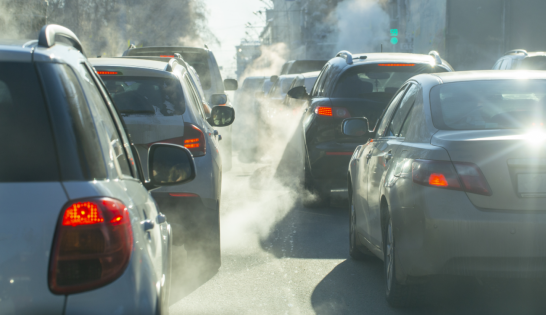A study conducted by the Barcelona Institute for Global Health (ISGlobal) and the National Supercomputing Center (BSC-CNS) estimated the daily ambient PM concentrations2.5PM10NO2 I3 in a wide range of European regions between 2003 and 2019 based on machine learning techniques. The aim was to determine the number of days on which the 2021 World Health Organization (WHO) guidelines for one or more contaminants were exceeded.
The research team analyzed pollution levels in more than 1,400 regions from 35 European countries, which corresponds to 543 million people. The results, published in Nature communicationshow that the global amount of suspended particles (PM2.5 and PM10) and nitrogen dioxide (NO2) have declined in most parts of Europe. Particularly PM levels10 were those that decreased the most during the study period, followed by those of NO2 and PM2.5with annual declines of 2.72%, 2.45% and 1.72%, respectively. On the other hand, the values of O3 In southern Europe they rose by 0.58% annually, almost quadrupling the number of days with poor air quality.
The study also analyzed the number of days in which exceeded at the same time Limit values for two or more pollutantsa confluence known as “Composite Pollution Day.”
Special efforts are needed to address PM2.5 and O3 levels and their associated compound pollution days
The results underline this significant improvements in air quality in Europe regarding PM10 and not2during PM values2.5 I3 continue to exceed WHO guidelines in many regions, resulting in more people being exposed to unclean air.
“Specific efforts are required to get PM levels under control2.5 I3 and the associated days of increasing pollution, particularly in the context of rapidly increasing threats from climate change in Europe,” says Zhao Yue ChenISGlobal researcher and lead author of the study.
“Our estimate of population exposure to compound air pollution events provides a solid basis for future research and policy development to address air quality management and public health issues across Europe,” states Carlos Perez García-PandoICREA and AXA Research Professor at BSC-CNS.
Heterogeneous geographical distribution
The research team has evolved Machine learning models to estimate high-resolution daily concentrations of key air pollutants such as particulate matter2.5PM10NO2 I3. This data-driven approach creates a complete daily picture of air quality across the European continent, going beyond sparsely distributed monitoring stations.
Our estimate provides a solid foundation for future research and policy development on air quality and public health management.
The models collect data from multiple sources, such as satellite aerosol estimates, existing atmospheric and climate data, and land use information. By analyzing these air pollution estimates, the team calculated the annual average number of days that the WHO daily limit for one or more air pollutants is exceeded.
The analysis shows that around 98.10%, 80.15% and 86.34% of the European population during the study period lived in areas that exceed the annual values recommended by the WHO by PM2.5PM10 and not2, respectively. These results are broadly consistent with European Environment Agency (EEA) estimates for the 27 EU countries using only urban station data.
No country met the annual ozone guidelines (O3).2.5 I3 in 2019, while the figures for NO2 and PM10 They were 55.05% and 26.25%.
PM levels during the study period2.5 and PM10 were highest in northern Italy and Eastern Europe, while PM levels were highest10 were higher in southern Europe. Increased NO levels2 They have been observed mainly in northern Italy and in some areas of Western Europe, such as the south of the United Kingdom, Belgium and the Netherlands.
Likewise the O3 In southern Europe the number increased by 0.58%, while in the rest of the continent it decreased or showed a non-significant trend. On the other hand, the PM reductions are the most noticeable2.5 and PM10 were observed in Central Europe, while in the case of NO2 They were mainly found in urban areas of Western Europe.
The complex management of ozone
The average exposure time and population exposed to PM contamination days2.5 I3 is significantly higher than for the other two pollutants. According to the research team, this underlines the urgency of greater control of these pollutants and the importance of combating them increasing trend and the effects of O exposure3.
Ozone management represents a complex challenge due to the secondary training route
The O3 Troposphere occurs in the lower layers of the atmosphere and is considered a secondary pollutant because it is not emitted directly into the atmosphere, but is formed from certain precursors – such as volatile organic compounds (VOCs), carbon monoxide (CO) and nitrogen oxides (NOx) – which arise during combustion processes, mainly in transport and industry. At high concentrations, ozone can harm human health, vegetation and ecosystems.
“Ozone management presents a complex challenge due to its secondary nature. Traditional air pollution control strategies that focus on reducing emissions of primary pollutants may not be sufficient to effectively mitigate high O levels3 and the days with the associated contamination of the compounds,” says Joan Ballester ClaramuntResearcher at ISGlobal and lead author of the study.
Addressing the Climate changewhich influences the formation of ozone through increased solar radiation and increased temperatures, is crucial for the Long-term ozone management and public health protection“, he concludes.
Reference:
Ballester, J. et al. “Population exposure to multiple air pollutants and their composite episodes in Europe,” Nature communication.
